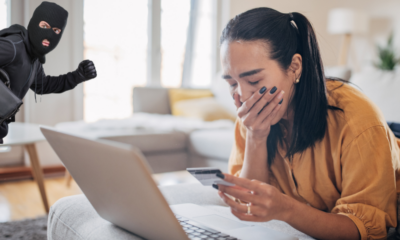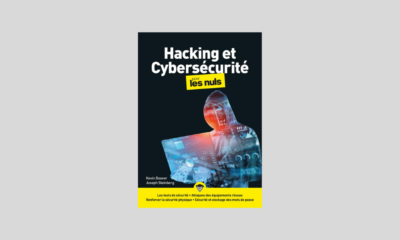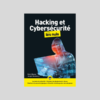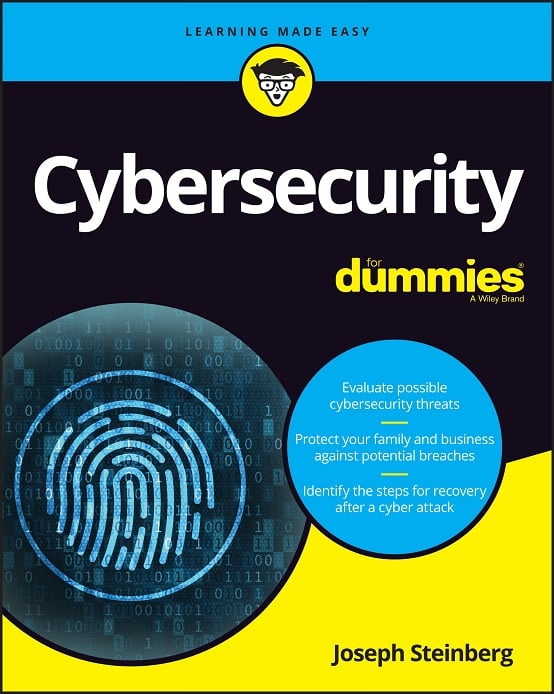17 Things You Must Do Before Traveling If You Want to Avoid a Cyber-Disaster
Criminals have been targeting travelers for as long as there have been people and roads. The modern world is no different, and, even in locations in which a person might feel physically secure, hackers and cyber-crooks certainly lurk.
As such, here are seventeen things that you can do before you travel, and that should dramatically improve yours odds of avoiding a cyber-catastrophe:
1. Backup all of your data before leaving on your trip.
If something goes wrong on the road and/or at home while you are aware, and you lose your primary copy of your data, you do not want your temporary headache to become a major nightmare.
2. Bring only the electronic devices that you need for your trip.
Any devices that have information on them that you would not want leaking should not be brought with you unless they are absolutely needed; lock up other devices in a safe place at home. The same goes for physical credit cards, ID cards, and like – bring what you need, and not more: if your wallet or baggage is lost or stolen you want the smallest amount of headache possible.
3. Obtain a “throwaway” or “high risk zone” device.
If you are traveling to a high risk zone for hacking (for example, China) get yourself a “throwaway” device or a device dedicated to use in the risky zone which you do not turn on outside of that zone. Businesses should provide such devices for traveling executives and others who handle sensitive business information. After travel, the “throwaway” devices should be wiped, reset to their factory settings, and then re-imaged with their corporate configurations and software. Of course, do not turn on any of your normal devices in the high risk zone – and, even better, do not bring them on your trip in the first place.
4. Turn off WiFi and Bluetooth.
Turn off WiFi and Bluetooth on all electronic devices traveling with you before you leave. And, whenever possible and practical, keep them off for the duration of the trip.
5. Notify your credit card issuers and banks when and where you are traveling.
By informing the financial institutions with which you do business, you not only reduce the odds of payments being denied when you shop in some far-away place, or of your ATM card being blocked, but also improve their chances of preventing fraudulent charges or payments made by someone local to your home who has stolen your card or account information and attempts to commit fraud while you are away.
6. Notify friends, relatives, and/or coworkers.
Likewise, whenever possible, notify family members, friends, and co-workers of your plans – telling them reduces the likelihood that they will fall prey to social engineers and virtual kidnappers.
7. Be careful not to notify the rest of the world.
Do not post on social media, for example, that you are looking forward to your trip. Why inform potential burglars that your home will be empty?
8. Encrypt.
While you should always store sensitive data in an encrypted format, many people are not strict about doing so on computers that never leave their homes or offices. When it comes to devices with which you travel, however, don’t consider such an option; encryption is nothing short of essential when it comes to such devices; the odds of a device being lost or stolen are higher when you are in unfamiliar places and deviating from your normal schedule and routine than when the devices are sitting in your home or office. Encryption is built in to many versions of Windows, and there are plenty of free encryption tools for other platforms available as well. Also, keep in mind that if you have doubts as to whether something is sensitive enough to warrant encryption, you should probably err on the side of caution, and encrypt.
9. Turn on your mobile phone’s lock feature.
You should be using it all the time, but, it is even more important than usual to secure your phone when traveling. I prefer using a password rather than fingerprints or other biometrics for reasons discussed in this article and others.
10. Enable remote wipe (and remote lock if it exists) for all of your mobile devices.
If a computer, tablet, or phone is lost or stolen, remote wipe can mean the difference between the data remaining secure and it being stolen and misused.
11. Make sure that your name and contact information are visible on your mobile devices.
To help anyone who finds your devices return them to you, write your contact details on the outside of the devices or include the information on the devices’ lock screens. Do not include your home address – you don’t want anyone who finds or steals one of your devices to know that you are not home. Also, don’t write your smartphone’s phone number on the outside of the phone – besides providing a poor way of contacting you if the device to which it corresponds is stolen, providing a thief with the number to the device can help him or her commit all sorts of crimes with it; let anyone who finds your device contact you with an email address and/or an easily redirected Google voice number or the like.
12. Bring your own power sources.
Pack your own charger and sufficient battery packs for when you will not be able to plug in. Do not borrowing such items before, during, or after your trip; various power cables and power banks have been found to contain chips that install malware onto devices to which they are attached. There are also USB devices that can destroy electronic devices.
13. Make sure that you have up-to-date security software.
You need security software (anti-malware, personal firewall, anti-spam, etc.) on every computer, tablet, and smartphone with which you are traveling. Also make sure that all patches for the devices’ operating systems and software are up to date.
14. Make sure that you have all the hardware and software that you will need during your trip.
This is especially true if you are traveling to a foreign country – for both technical and security reasons it is best not to install items purchased overseas unless you have sufficient expertise to ascertain that they are safe and fully-compatible with the rest of your technology. Also make sure that you have enough USB devices and media (such as DVD disks – yes, some people still use them) for whatever you need to accomplish during the trip. If you will need to transfer files to other people using USB drives, pack “throw away” drives that you will never place back into your computer after giving them to others or placing them into other peoples’ computers.
15. Plan your data access in advance.
Verify that you have enough data on your cellular plan for the locations to which you are traveling (and increase the data limits if needed). If you plan to use WiFi on your trip (which is true for most of us when we travel), learn how to do so safely before you leave on your trip, and prepare accordingly. Keep in mind that a personal hotspot running on your phone allows your other devices to leverage your phone’s cellular Internet connection; using such technology to connect to the Internet typically offers far better security than does using WiFi outside of your home or office.
16. Prepare for safe social media usage.
Turn off location tracking and any automatic check-in features running on your social media accounts. As mentioned above, do not post on social media that you will be traveling. If you are using Waze or the like for directions, make sure that you are not sharing “too much information” about your travel with outside parties – better yet, stay “anonymous” on such applications.
17. Prepare your baggage to keep your data safe.
Make sure all of your equipment containing sensitive information fits in your carry-on bag. Do not put computers or the like into suitcases that you will check as baggage.
(An earlier version of this article appeared in 2016 in Inc. Magazine)













 CyberSecurity for Dummies is now available at special discounted pricing on Amazon.
Give the gift of cybersecurity to a loved one.
CyberSecurity for Dummies is now available at special discounted pricing on Amazon.
Give the gift of cybersecurity to a loved one.